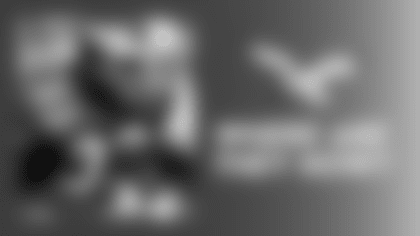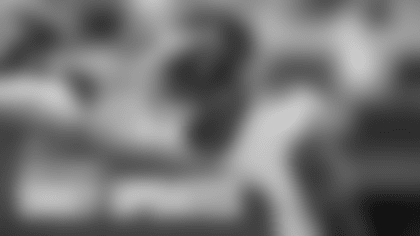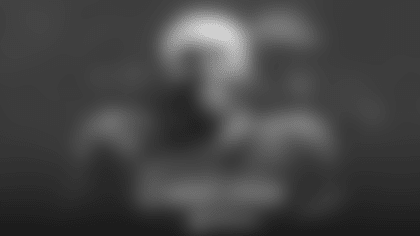The Minnesota Vikings and the Philadelphia Eagles should be very familiar with each other by now. These two teams have faced off every season since Doug Pederson has been the head coach in Philadelphia. These matchups are always fun when you have an offensive head coach (Pederson) squaring off against a defensive head coach (Mike Zimmer), and this Vikings team is certainly known for its defense.
This is a fast, attack-first front seven that wants to get after the quarterback and stop the run with a fury. Minnesota currently ranks first in the NFL allowing just 8.98 yards per catch. The Vikings rank in the top 10 in sacks (15), rushing yards allowed per game (88.2), third-down conversions (34.8 percent), red zone touchdown efficiency (46.2 percent), overall scoring efficiency (25 percent), and three-and-out percentage (23.1 percent). It's a stressful unit to prepare for and to play against because of the speed in the front seven and what Minnesota does from a schematic standpoint.
I’ve written a LOT in the past about Zimmer's Double A-gap pressure scheme because the Vikings are so good at it. Now, they don't do it AS often these days, which is expected (because you always want to tweak and adjust what you do), but it's still a big part of what they do. The Eagles have to be ready for it.
While the A-gap blitzes aren't as prevalent, the Vikings do mix in a variety of pressures when getting after opposing quarterbacks. One tool they use to get to those pressures is the art of disguise.
ALL OF THE VIDEO CLIPS FEATURE AUDIO ANALYSIS FROM FRAN DUFFY
Once the offense sets the protection, it doesn't change when the ball is snapped. If a defense can disguise the pressure and, very late in the pre-snap phase, re-align and move players around, a defender could become free. That happened on this Anthony Barr sack of Matt Ryan, where he came in untouched off the edge. That was all thanks to the disguise.
The other sneaky way the Vikings are able to get defenders to the quarterback is with the use of Green Dog blitzes. Ironically, a Green Dog is actually not even a called blitz from the defensive huddle. It's a call that each defender makes when they're in man coverage on a running back or tight end. It just so happens that the Vikings' linebackers and safeties are some of the best in the league at executing them.
The Green Dog is a simple concept. If you're a defender matched up on a running back or tight end in man-to-man coverage, and that running back or tight end stays in to block on a passing play, then you take it upon yourself as the defender to rush as a blitzer. The offense is trying to gain numbers in protection, so by inserting yourself back into the rush as an extra blitzer, you're able to take those numbers back. This causes all kinds of problems for offenses, whether it results in the Green Dog players getting into the backfield free for a rush at the quarterback or if it pulls a player away from a designated double team on the edge against a defensive end.
There are examples of both in the clip above. Packers fans were none too happy after Jimmy Graham was seemingly left one-on-one with pass rusher Danielle Hunter. Who would want that matchup offensively? But it all happened because Eric Kendricks took off late as a blitzer, pulling a running back away from the double team and creating that opportunity for Hunter.
When the Vikings send designed blitzes at offenses, it's often out of their "speed" packages, where Minnesota takes defensive tackles off the field, slides defensive ends inside, and tries to find favorable matchups in the trenches. Minnesota is prone to running lots of stunts and twists from these looks as well, something the Eagles must be ready for up front.
This week on Eagles Game Plan, Greg Cosell did a masterful job of explaining one of the ways the Vikings attacked the Giants out of this exact look.
With Anthony Barr, Everson Griffen, and Danielle Hunter, the Vikings have three long, explosive edge rushers who are proven commodities when getting after the quarterback. Throw in reserves like Stephen Weatherly (who stepped in for Griffen last year and performed admirably), Hercules Mata'afa (an undersized defensive tackle with outstanding athleticism), and Ifeadi Odenigbo (a high-upside pass rusher who worked out extremely well when he came out of college), and there are a lot of "fastballs" on that Minnesota front.
Let's focus on Griffen though because he missed last year's matchup between these two teams. He's long, explosive, and very crafty as a pass rusher. He sees a majority of his reps on the offense's left side, so the matchup here is with him and Jason Peters in this game. Griffen wins in a lot of ways, but one of his go-to moves is his cross chop move, which he uses to win on the outside. What I love is that he has a great changeup, mixing in the use of a spin move to win inside. Griffen is a tough block for any lineman, and will be a test for the left side of the Eagles' offensive line.
On the opposite side, Danielle Hunter has evolved into a strong pass rusher as well. He's all arms and legs, and he does a great job of maximizing his length against both the run and the pass. Hunter has violent hands, eats up ground quickly, and plays with a relentless motor. He'll be matched up primarily with Lane Johnson in this game.
Let's quickly shift to the Vikings' offense, which has a new feel this season with several new coaches in the building. Gary Kubiak and Rick Dennison, who come from the Mike Shanahan coaching tree, bring a heavy dose of the zone stretch run game, boot-action play passes, and a desire to establish the run, while keeping defenses guessing because of the balanced approach. The results so far have been very good.
The Vikings rank third in the NFL with 166.4 rushing yards per game at 5.44 yards per carry. They have more 10-plus-yard runs (27) and more 20-plus-yard runs (8) than any other team, and boast a truly dynamic ground attack.
The catalyst of the Vikings' offense is running back Dalvin Cook and the name of his game is speed.
The Vikings utilize the stretch zone run game, among other concepts, to either get Cook out in space or allow him to make one cut and get downhill in a hurry. If he gets to the second level uninhibited, watch out, because he's very tough to get a hand on when he gets to top gear. The Eagles have GOT to be stout at the point of attack up front and must set a strong edge to keep him from getting up to the second level of the defense.
A player who helps spring Cook free is fullback C.J. Ham, who is severely underrated considering his impact on this Vikings offense.
Ham is an explosive lead blocker and has laid some devastating hits on unsuspecting defenders so far this season. He's a player who the Eagles' linebackers and defensive backs must be wary of when the Vikings are in their heavier personnel sets.
The run game is where things start for Minnesota, but their play-action pass game is what picks up even bigger chunks of yardage.
These boot-action throws attack the eyes of linebackers and safeties. It's a big theme around the NFL now with other coaches in the Mike Shanahan tree thriving with other teams in San Francisco, Los Angeles, Green Bay, and Denver. The back seven defenders have to be very decisive with reading keys and aware of where routes are developing when getting back to their landmarks in coverage.
Thirty percent of Kirk Cousins' throws have come off run-action this year (fifth in the league). You can guarantee that we will see play fakes from the Vikings on Sunday. The other aspects of this offense that you can pretty much lock in on for this Minnesota team are screen passes and the draw game.
The Vikings' screen game is among the best in the league that I've seen so far. They throw screens to backs, receivers, and tight ends, using misdirection to disguise their screens very well. Their draw run game is also very effective. Both of these concepts are really strong tools to use against aggressive defenses, Eagles included, so you can pretty much guarantee that we will see a healthy dose of both on Sunday afternoon.
Fran Duffy is the producer of the Emmy-nominatedEagles Game Planshow which can be seen every gameday during the season on NBC10 in Philadelphia. He is also the host of two Eagles-related podcasts,Eagle Eye in the Sky, which examines the team from an X's and O's angle each and every week as well as theJourney to the Draft podcast, which covers college football and the NFL Draft all year round. Fran also authors the Eagle Eye in the Sky column, which runs four times a week during the football season to serve as a recap for the previous game and to preview the upcoming matchup. Prior to joining the Eagles in 2011, Duffy was the head video coordinator for the Temple University football team under former head coach Al Golden. In that role, he spent thousands of hours shooting, logging, and assisting with the breakdown of the All-22 film from the team's games, practices, and opponents.






















